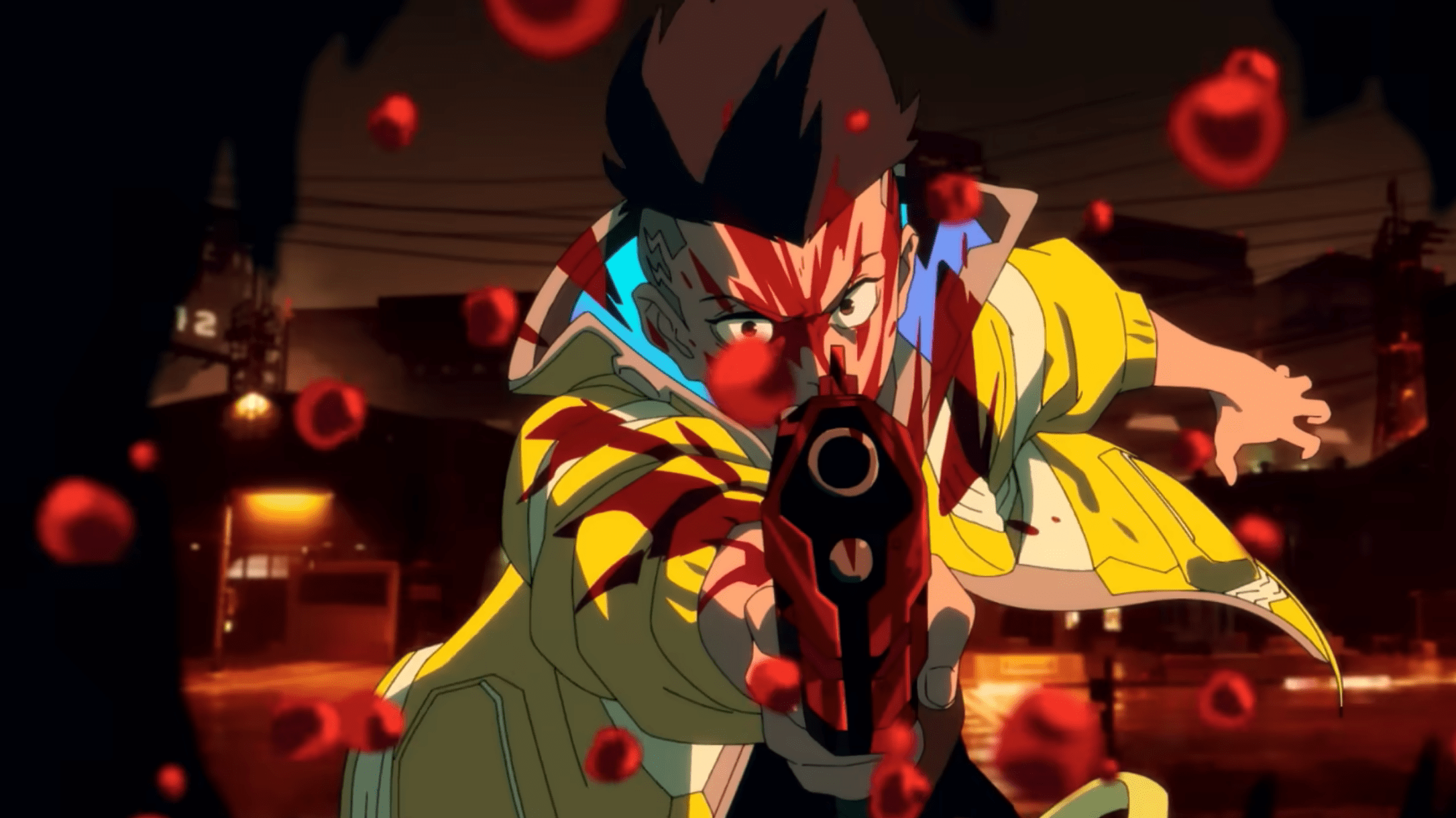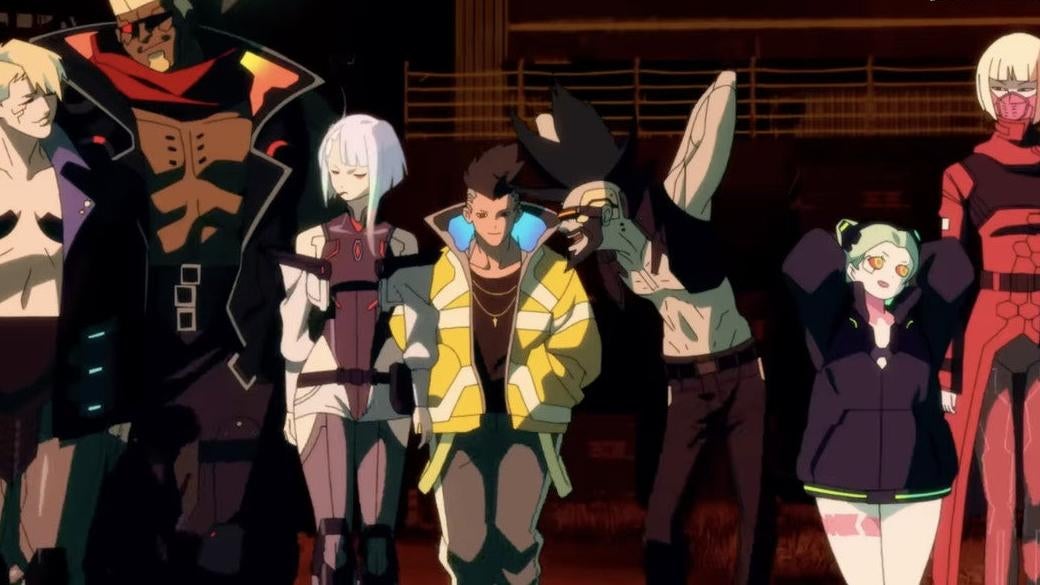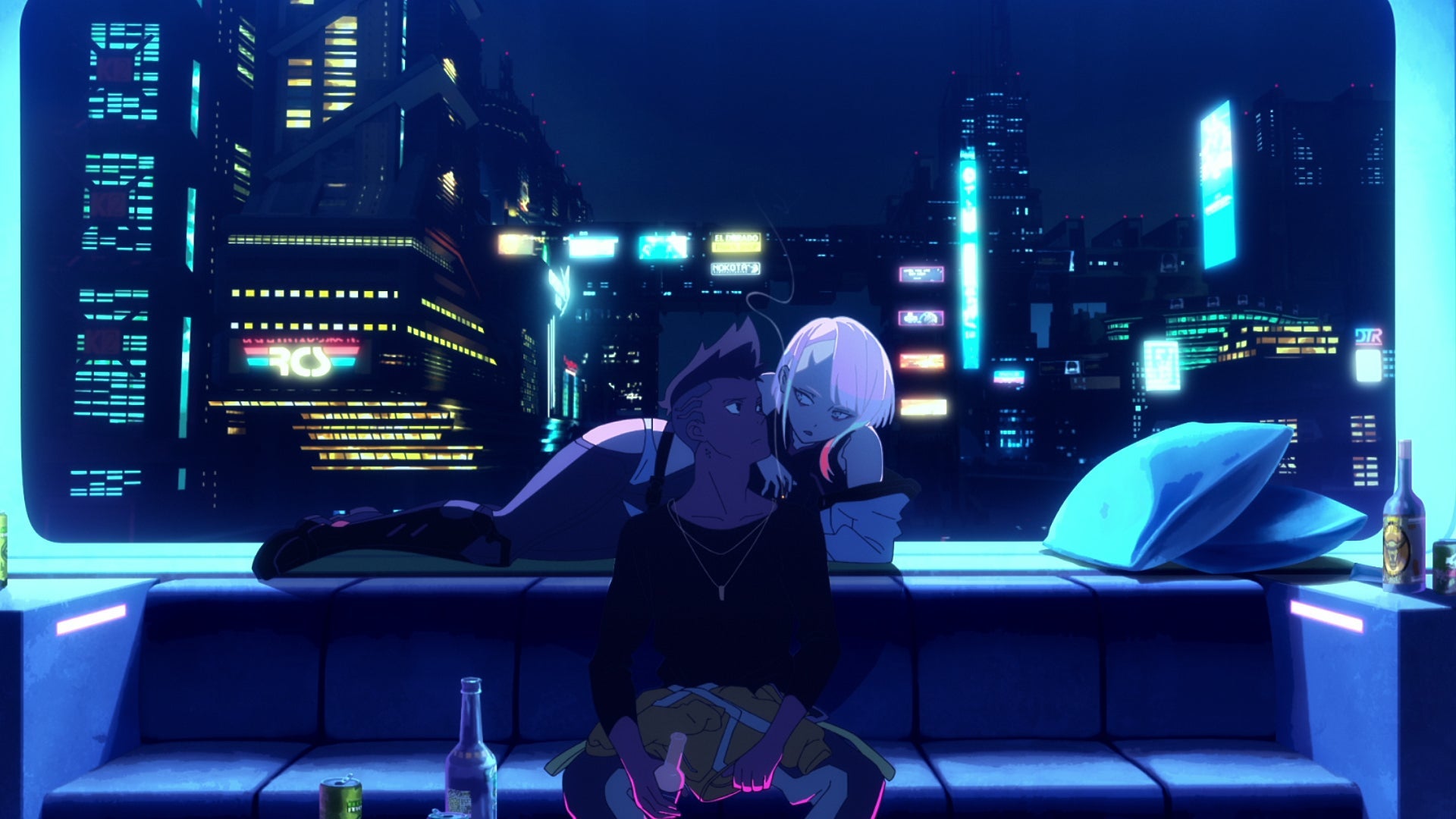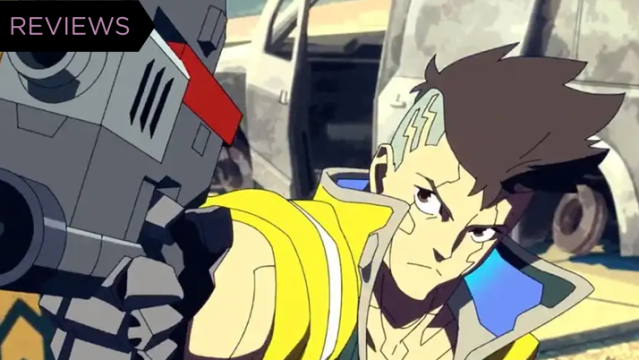Cyberpunk: Edgerunners has a lot of weird baggage attached, from its connection to the controversial and divisive CD Projekt game to being the latest in the legacy of Studio Trigger. But Netflix’s latest anime acquisition has a lot to love… and a few things to love a little less.
Out today on Netflix, Cyberpunk: Edgerunners is a peculiar sidestep for one of the most lauded animation studios out of Japan. Trigger — and in particular director Hiroyuki Imaishi, known for his work on projects like Kill la Kill and Promare — is best known for its original work, rather than dabbling in established franchises as it has for things like its work on Gridman and Dynazenon with Tsuburaya, or the studio’s work on “The Twins” and “The Elder” in the first season of Star Wars: Visions.
xaEdgerunners, a 10-episode series about David Martinez, a young corporate academy dropout in the neon-tinged Night City, who finds himself thrust into the world of cybernetically-enhanced freelance mercenaries after a personal tragedy, is a bloody, slick take on the world of CD Projekt’s own adaptation of the iconic Cyberpunk RPG system created by Mike Pondsmith. Here’s what we thought of the series — the good and the bad, with a few spoilers thrown in for good measure.

We Liked: That It’s Stylish as Hell

Unsurprisingly for a Trigger series — especially one directed by Imaishi himself — a lot of the joy in Edgerunners is its bold aesthetic. The anime takes the grimy world of Night City as seen in 2077 and saturates it with distinctive colour, from splashes of violent red to the neon haze of city streetlights, but especially in its use of the bright yellow that defined a lot of the marketing for the game — cleverly baked into David’s design in the form of his mother’s medic jacket, which he takes as his own after she perishes in a traffic accident.
There is never not a moment its characters don’t just look cool. The visual effect to create the activation of their enhanced cybernetic abilities, even as the narrative descends into a warning of how they slowly drive each user to a state of degenerative “cyberpsychosis,” is done so well that you cannot help feel excited that something extremely cool is about to happen whenever it occurs — no matter how gut-wrenching it becomes as you realise you’re watching the decline of these characters along the way.
We Liked: That It’s Gory, But Doesn’t Revel in It

This might be a weird thing to say about a show where people repeatedly explode into splotches of red and crumpled piles of viscera and cybernetics, but for such a violent show, Edgerunners is surprisingly tasteful in its approach to hyperviolence. Despite its repeated presence in the series, whether it’s the deaths of swaths of background characters or for the deaths of, by the end of the show, almost the entirety of the main cast, violence in the series never feels like it’s taken too far for the sake of edginess.
If anything, there’s a point to Edgerunner’s approach to violence being so overexaggerated — like we said, people don’t just get shot and keel over, they are blown open, teared by hails of gunfire, exploded as firearms are thrust into their bodies at close range. But as gory and as brutal as it is, deaths come quick and are rarely lingered on. The show doesn’t feel like it’s slowing down to show you suffering and blood spurts to just go “look at us, we’re a gritty streaming service anime that can get away with this for no reason at all,” but instead making a point about the harsh world that its characters operate. No one in Night City is special enough to get a lingering, heroic, “perfect” death — people blink in and out of existence regardless of status, gone in horrifying instants.
We Liked: The Animation

Going hand in hand with the slick aesthetic of course is how masterfully Cyberpunk: Edgerunners moves. There’s lots of great detail in characters, who feel vibrant and exaggerated even in small moments, but of course the standout appeal of the show is its hyperkinetic action.
This is largely in part because of one of the series’ main gimmicks — David’s first cybernetic upgrade is a military spinal implant called a “Sandevistan” that allows him to operate so fast that he goes into the equivalent of bullet time. It’s rendered in the show as the whole world around David turning a shade of pale green, as he slowly moves in a realm where everything around him is practically static, leaving pastel “shadows” of himself like a trail behind. It’s incredibly well done, and in the few times the series rewinds to show us what David’s actions look like to the “normal” world it’s somehow just as impressive. It’s a show dripping with style at every opportunity.
We Liked: That Terminology Aside, It’s Surprisingly Accessible

If you’ve never played either the original TTRPG or CD Projekt’s video game now that it’s significantly less broken than it was, you might be concerned that Edgerunners will leave you alienated. The good news is that the series is extremely friendly to Cyberpunk newbies, offering an almost entirely standalone story that follows original characters unconnected from the wider world of 2077. Although there is a late-game addition of a particular villain from the game, the series otherwise stands on its own strengths instead of relying on pre-learned shorthand, and remains compelling even if you’ve never experience Pondsmith’s setting before.
The only thing that slightly gets in the way sometimes is some worldbuilding slang — curses like “Choom,” cybernetically enhanced people being described as “chromed-up,” or even the title of the show itself, two words both interchangeably used to describe David and his crew’s chosen career path at digital mercenaries. But if you can handle that kind of flavour, you don’t need to worry about diving into a massive RPG just to enjoy the show.
We Liked: The Melancholy Vibe

For all its, well, Cyberpunk attitude, what actually makes Edgerunners work is that it is not really an edgy, rebellious action series at its heart — it’s a surprisingly melancholic tale about humanity and connection, and what the people of its world are willing to do to themselves, physically and spiritually, to survive.
This is explored primarily through David’s relationship with one of his criminal crew’s hacking experts, or runners, named Lucy — the one who draws him into a life of mercenary work in the first place after his mother’s death. They make for a compelling couple, but as the series progresses and focuses more on David’s growing addiction to cyber-enhancement — playing with the belief that as a shonen protagonist he is special and can avoid the pitfalls that drive others to cyberpsychosis — it becomes more introspective and maudlin. This happens even as the action ramps up, as we get to see his rise and rapid decline, along an arc that Edgerunners does a very good job of guiding us through. David’s journey is a sad, inevitable one, but one rendered well enough in between the slick visuals to make it worth seeing through.
We Didn’t Like: The Phone Calls

As fast-paced and action-packed a series as it is, however, Edgerunner relies an awful lot on the fact that its characters can ring each other up through their cybernetic implants to have private conversations, whether just to chat in downtime or to keep communication secret on missions. A lot of this can lead to info-dump-y conversations where characters are doing little than standing around as their eyes flash, but it’s also an example of the rare time the series gets a little too stylish for its own good.
Most calls in Edgerunners borrow a motif from Cyberpunk 2077, where an in-universe holographic rendition of the conversation plays out by a character’s head, text rolling along on screen in small floating boxes. In these moments, if you’re watching Edgerunners in Japanese, they’re not subtitled — relying on you to instead squint and follow along with these small boxes of neon-hued text that are much less legible, and often also include corrupted text or repeated words that don’t necessarily match what’s being said — or are sometimes inverted so they’re facing the character rather than the audience. Stylish? Yes. A glaring accessibility issue that could’ve been solved by just still subtitling the dialogue too? Absolutely.
We Didn’t Like: The Abrupt Villains

Edgerunners largely plays in a space where its antagonists are more systemic ideas than actually individuals for the most part — David and his crew are caught up in the power struggles of dominant megacorporations, shady economic war ageing, haves-and-have-nots. Even their smaller criminal enterprise is infected by this, as their job-acquiring fixer, a man named Farady, emerges as a turncoat threat later on in the series by playing a part in an inter-corporation rivalry over secret cybernetic tech.
This makes the last-minute introduction of two largely under-explored villains — intelligence agents manipulating Faraday on behalf of the Arasaka Corporations, and a character from the games, a mostly cybernetic legendary soldier called Adam Smasher — a weirdly rushed and under-explored way of raising the stakes for David, Lucy, and the rest of their crew in the last few episodes. There’s never really any time to care for either threat, although Smasher’s presence in particular largely undercuts the narrative if you know he’s from the game and therefore cannot be bested by Edgerunner’s heroes.
We Didn’t Like: The Opening Theme
OK, this is pretty picky for what is otherwise a pretty great show: while the visuals of Edgerunners’ opening title sequence are as slick and as stylish as the rest of the series, the choice for it to not use an original track or something more fitting than Franz Ferdinand’s “This Fffire” is unhinged. The show itself does a great job of blending an original score from Akira Yamaoka with licensed music that fits the sci-fi world of Night City episode to episode, but this just… feels odd.
Picky, but come on, in the world of anime, the opening is important to nail, and this just doesn’t quite work.
